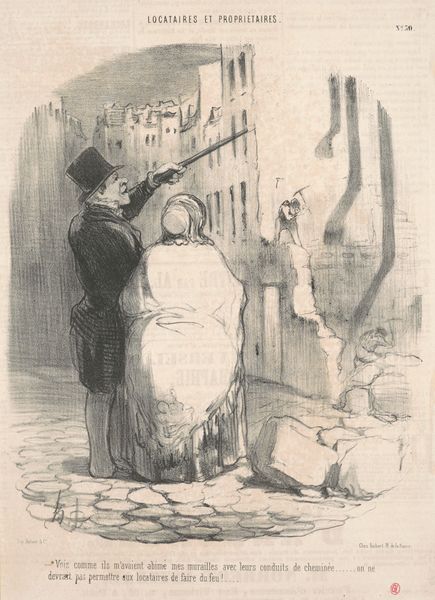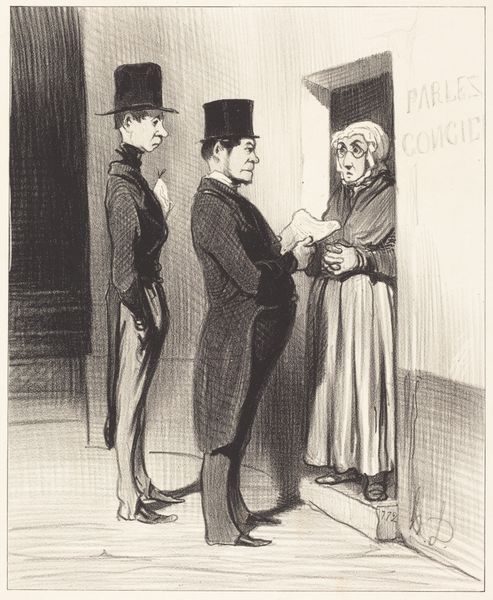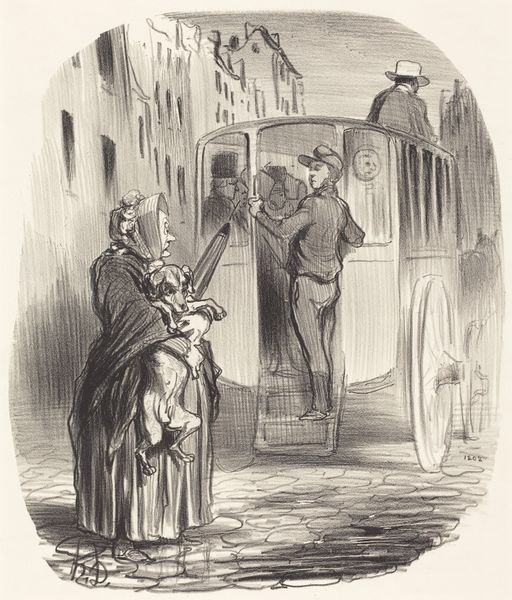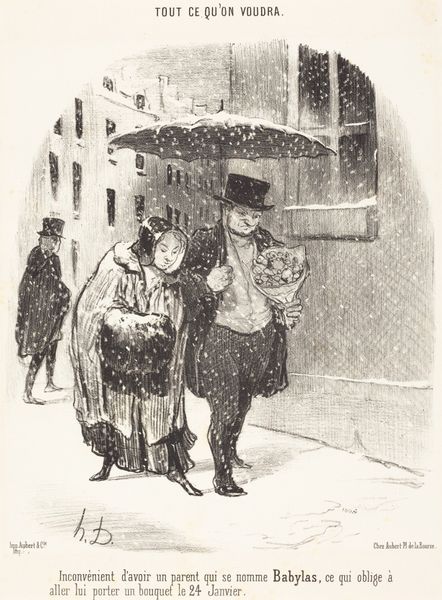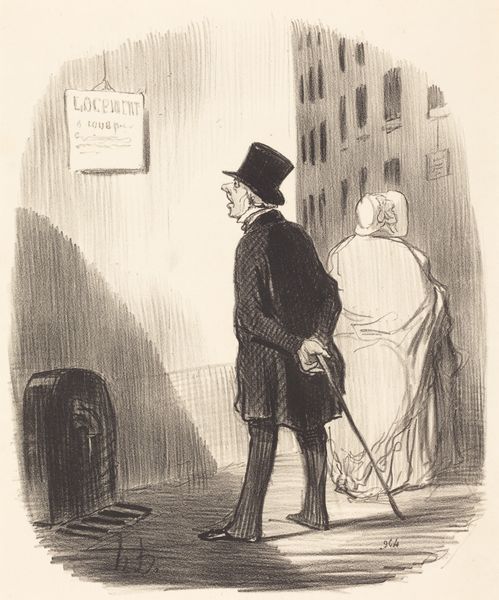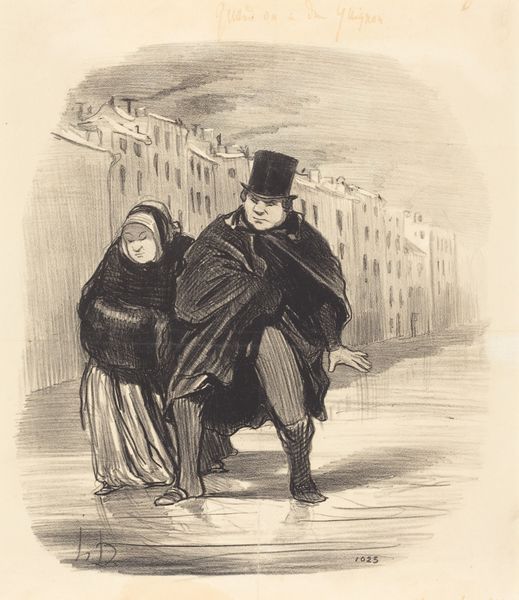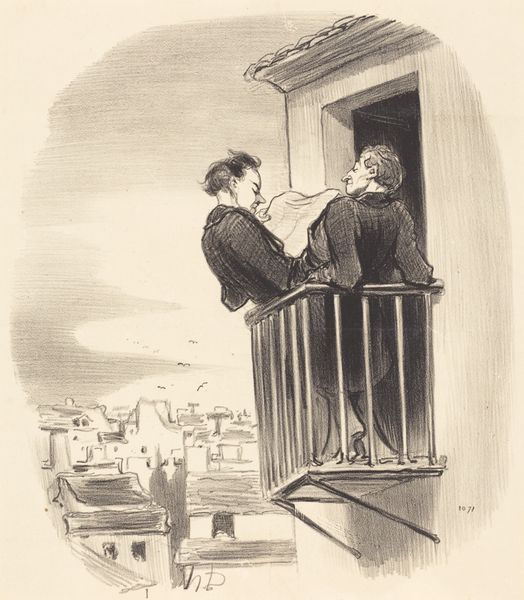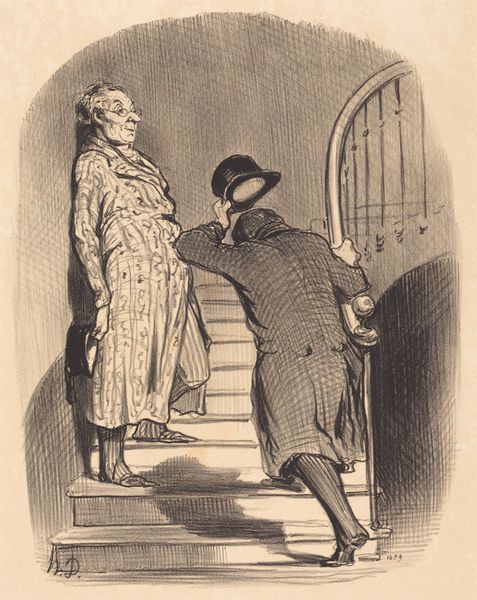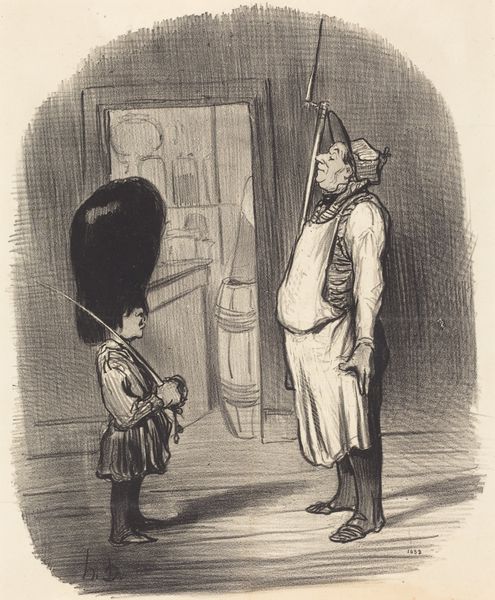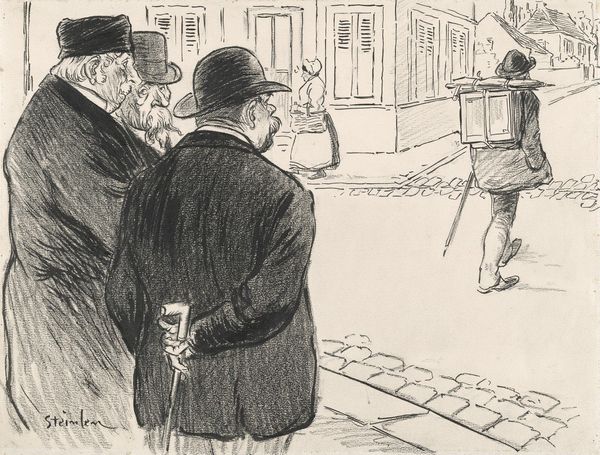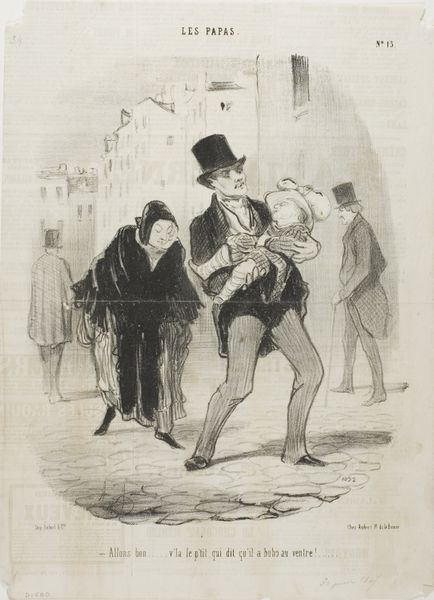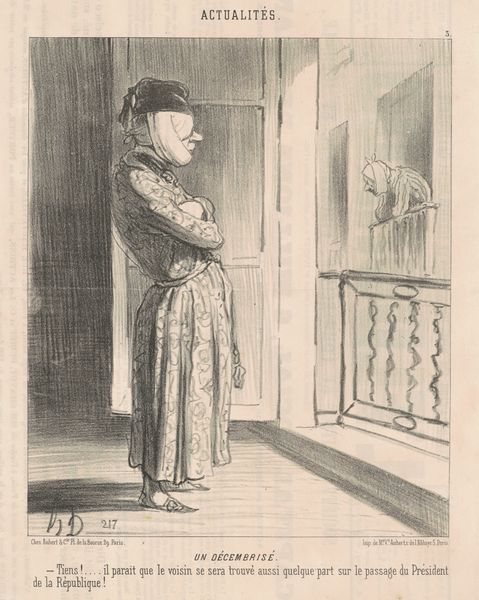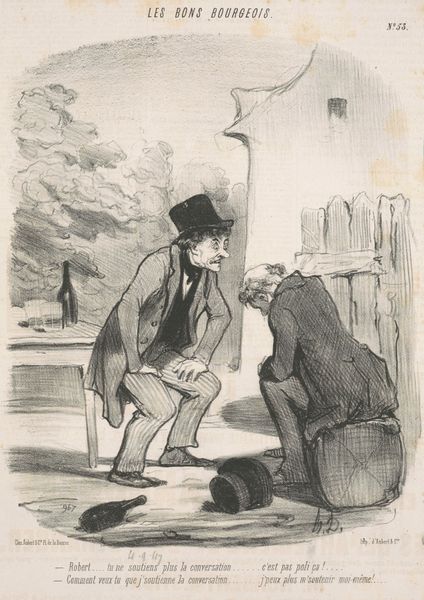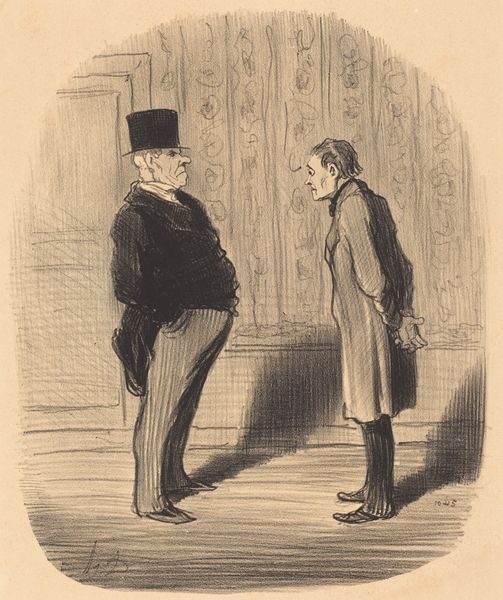
drawing, lithograph, print
#
portrait
#
drawing
#
imaginative character sketch
#
light pencil work
#
flâneur
#
quirky sketch
#
lithograph
# print
#
caricature
#
cartoon sketch
#
personal sketchbook
#
idea generation sketch
#
character sketch
#
romanticism
#
sketchbook drawing
#
cityscape
#
genre-painting
#
storyboard and sketchbook work
#
sketchbook art
#
realism
Copyright: National Gallery of Art: CC0 1.0
Curator: Let's turn our attention to Honoré Daumier's lithograph from 1847, titled "Moi aussi j'ai été jeune…", which translates to "I too was young." Editor: The immediate impression I get is a somber, almost melancholic mood. There’s something stark about the contrast between the sharp lines of the buildings and the softer shading of the figures. It evokes a real sense of the distance between the woman in the window and the couple below. Curator: Indeed. Note how Daumier masterfully uses the lithographic technique. The hatching and cross-hatching create a wonderful depth, particularly in the textures of the clothing and the architectural details. Observe, also, how the composition is structured, the placement of the figures to the left and right, balanced, yet asymmetrical. Editor: And consider the historical context! Daumier was working during a period of significant social upheaval in France. His work frequently served as commentary on class divisions, urban life, and the plight of the marginalized. The older woman looking down at the younger couple could represent the past looking at the future, or even regret for opportunities lost. The title of the work implicates this interpretation of loss directly. Curator: A compelling observation. We can see that the print is far more than a simple representation of a cityscape. The lines around the face and eyes really capture something unique in how Daumier translates this poignant moment in time. Editor: Absolutely. And thinking about gender roles, perhaps she's a widow, confined to her home, while the young couple enjoys the freedom of the city. There’s a subtle but powerful statement here about aging and visibility within the rapidly changing urban environment of Paris. What the city enables and what it withholds, depending on identity and stage of life. Curator: So, we've progressed beyond mere observation to find this picture of fleeting melancholy and societal observation of Daumier’s formal capabilities with structure and light. Editor: Yes, by situating Daumier's technical artistry within his historical and social milieu, we glimpse how "Moi aussi j'ai été jeune…" functions as both a visual marvel and potent socio-political commentary, raising important questions of how Daumier used class in conjunction with aging to present meaningful reflections on the past in conversation with his present.
Comments
No comments
Be the first to comment and join the conversation on the ultimate creative platform.
